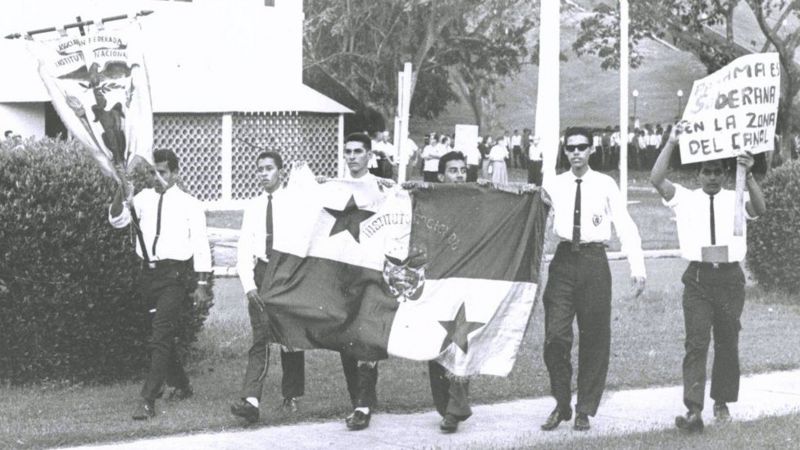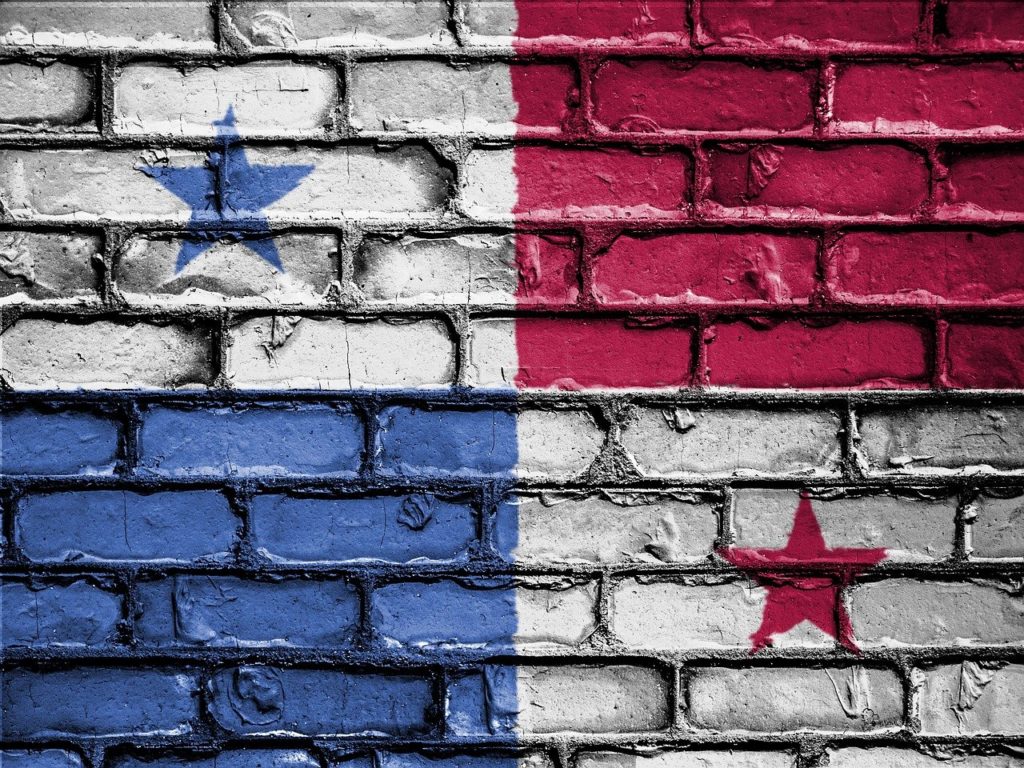History
Every year, on January 9, the panamanians commemorate the tragic events of 1964 when a popular uprising around the Panamá Canal lead to violent events. Let’s go back in time to understand the context.
After the french project for the Panamá Canal of Ferdinand de Lesseps went bankrupt, Roosevelt’s USA bought it back in 1903. In 1904, in exchange for their support in the country’s independance from Colombia, the Panamanians grant the USA a perpetual concession of the complete zone surrounding the construction, and simply known as the « Canal Zone ».
Life in the Canal Zone
As soon as it is inaugurated, the canal is a success and brings a lot of work. Many american families move to the zone. Many residential zones are built, as well as shops and schools… Very soon, the american community is independant from the panamanian surroundings, Americans live and work in the Zone without having to interact with the local population and as they become richer, the Panamanians can only watch from a distance. Because the Canal Zone is secured by a fence, its entrance guarded by american police, and the only Panamanians allowed to enter are those who work there. Little by little, Panamanians grow unconfortable with the situation and in the 1950’s appear the first protests and demands.
An attempt at conciliation
The protesters’ demand is clear : they want both countries to renegociate the concession agreement, so as to revoke the perpetuity clause. On several occasions, some Panamanians muscle in the Canal Zone to raise their national flag. As this sort of incidents increases, both countries decide to make an attempt at conciliation. By the end of 1963, they agree that starting January 1st, 1964, the panamanian flag should be raised alongside the american flag, on all buildings of the Canal Zone, except US military buildings, ships and schools receiving exclusively americans students. The least you can say is that no one was happy with the outcome ! On one hand, the Americans felt like this land was part of the USA, so they didn’t want any other flag besides theirs. On the other hand, the Panamanians felt like this symbolic gesture was not enough and still wanted the concession agreement to be reconsidered. When January comes, various civil buildings don’t respect the agreement and refuse to raise the panamanian flag, deliberately provoking the Panamanians.
January 9, 1964 : the day of the tragedy

On the morning of January 9th, several panamanian students decide to walk towards the entrance of the Canal Zone. They carry with them an old, symbolic, panamanian flag from their school and demand the right to enter the zone to raise their flag. In front of them, a crowd of Americans soon gathers, refusing to let them. In between, the american police tries to mediate, suggesting only half a dozen students enter to raise their flag. Crowd movements, arguments, pretty soon the historic panamanian flag is torn to shreds. The news travels fast, and a crowd of Panamanians joins the students to protest against this humiliation. What started as a pacific protest soon turns into riots and confrontation. The american police is overwhelmed by the situation and asks the panamanian National Guard for help, but they refuse to step in. Some people push to enter, some climb fence, others take fences down… The police decides to shoot in the crowd.
The aftermath
The situation will not return to calm until the night, after the intervention of the army. There are some twenty fatal victims among Panamanian, 4 on the american side. And the aftermath of this tragic day is lasting. The panamanian authorities immediately decide to suspend all diplomatic relations with the USA, until they accept to renegociate the concession contract for the canal. Many countries support Panamá and it is under pressure of the international community that the USA finally agree to renegociate. The road is long but it eventually leads in 1977 to the historical Torrijos-Carter agreement, by which the Panamá Canal officially goes back to Panamá, on December 31st, 1999. January 9 was named Martyr’s Day to commemorate the events.
Nowadays, the Canal has turned Panamá into one of the wealthiest and most stable countries of Latin America.
Photo Credit
Flag of Panamá – David Peterson on Pixabay
Protesting students carrying their flag, 01/09/1064, Property of the Museum of the Canal of Panamá

